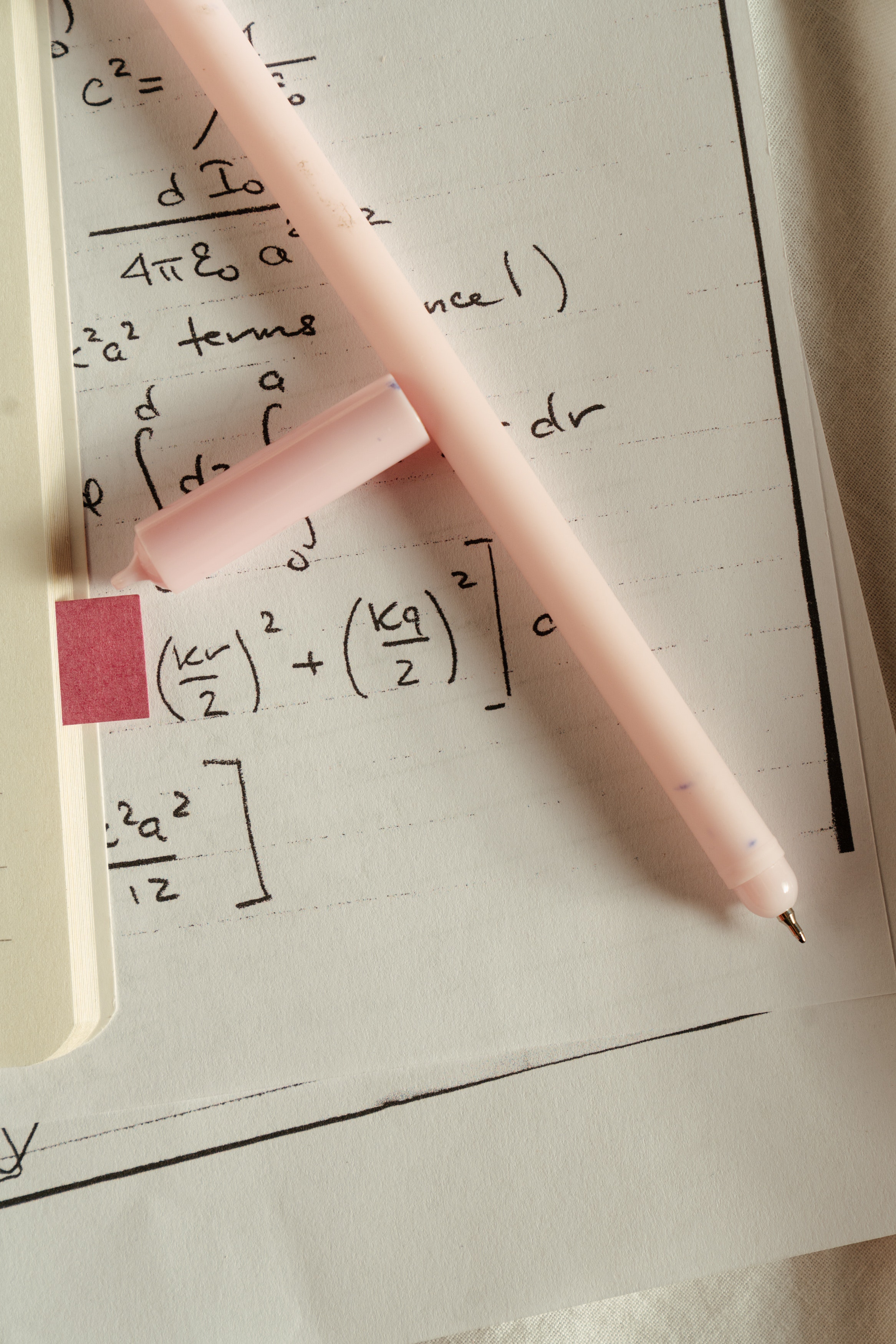
Photo by Lagos Techie on Unsplash
Academia should incentivize mathematicians to make their work more accessible
Math papers that are difficult to understand prevent scientists from learning about tools they can use in their research
Ingrid Daubechies has a rare quality for a mathematician. Instead of only writing her papers to be understandable by other mathematicians, she makes them accessible to scientists as well. For example, in her breakthrough research paper from 1988 on a new mathematical tool called wavelets, she made sure to explain how her work could be used in practice and included a long numerical table to help scientists and engineers put it to use. Her efforts paid off. Many scientists and engineers were "inspired...to try out" what she had developed and her work went on to have many important applications, including in image compression and reducing noise in data.
Most other mathematicians are not like Daubechies. As she notes, they tend to write in an “extremely terse” way that makes their work seem “opaque” to non-mathematicians. This is a big problem. Mathematics and science can influence each other, stimulating progress and leading to new discoveries. But if scientists cannot understand mathematicians then they won’t know about new mathematical tools they can use in their own work.
To try to fix this problem, we need to know why mathematicians tend to write in a way that is often inaccessible to scientists. In a recent paper discussing how to make math more accessible, Don Larson, Kristen Mazur, David White and Carolyn Yarnall point out that mathematicians are under pressure to write lots of research papers and publish them in prestigious journals. This can make mathematicians “feel compelled to write in a very specific style, aiming to present the results in the most concise language possible and to impress the reader with their brilliance.” Even if they try to adopt a more understandable style, mathematicians may encounter push back from reviewers or journals. Daubechies notes that she was lucky that the mathematics journal she published in “did not flinch” at the inclusion of her large table. Other journals may well have balked at it and, if they did, she would have had to remove it, making her paper less accessible to scientists.
The pressures mathematicians face when writing their research papers are unlikely to go away, so it may be difficult to make significant changes to the way they are written. Because of this, some mathematicians have been exploring alternative forms of writing to help make their work more accessible. One example is the User's Guide Project, a website where mathematicians can publish plain-language narratives about their research papers, making their technical work more user-friendly.
Participants in the project select one of their research papers and wrote a new kind of paper, called a user's guide, to accompany it. Each user's guide has sections containing background information, metaphors and diagrams, information about how the author came up with the results, as well as a summary aimed at non-mathematicians, with the explicit goal of making the original research paper understandable to a wider audience. The guides are peer-reviewed and made freely available on the project’s website. And while the user’s guides originally focused on an area of math called algebraic topology, in their paper, Larson, Mazur, White and Yarnall, who were all participants in the project, urge mathematicians from other areas to start their own version of it for their fields as well.
Despite the potential of user's guides to make math more accessible, Larson, Mazur, White and Yarnall report in their paper that many participants in the project did not receive credit for them from their institutions because the guides are not themselves research papers. This means that their institutions do not take the user’s guides into consideration when evaluating mathematicians for tenure and promotion.
This is not only unfair to the mathematicians who put in the time and effort to make their work more accessible, but will also discourage other mathematicians from participating in similar projects. After all, mathematicians want steady, secure employment like anyone else, so they will likely spend their time doing activities that their institutions recognize and reward, like writing new research papers, while avoiding the ones that they do not, like writing user’s guides.

As I argued recently, the lack of credit mathematicians receive for making their work easy to understand is something that can and should be changed. First, the mathematical community needs to be made more aware that making mathematics accessible can help researchers solve other scientific problems. Professional societies, such as the American Mathematical Society and the Mathematical Association of America, may be able to spread the word about this and potentially help mathematicians learn how to write these types of papers through outreach and professional development programs.
And if mathematicians are not sold on the importance of their work being used to solve scientific, rather than solely mathematical, problems, they should be reminded that new discoveries go both ways; scientific advances often bring with them mathematical advances, too. For example, Daubechies recounts how insights from engineering led to new mathematical results about wavelets, when an engineer named Martin Vetterli recognized a strong connection between wavelets and an engineering algorithm called subband filtering. And physicists found an important formula in an area of math called linear algebra while they were working out the behavior of subatomic particles.
Once the mathematical community is aware of the potential value of non-research papers like user’s guides, they must take action to formally acknowledge and give credit for them. One way to help this happen is to make sure that there are enough reputable journals that publish such work.
While there are a variety of journals that do publish these kinds of non-research papers, such as Expositiones Mathematicae, there has been discussion among some mathematicians that these types of journals are not well-known and there are not as many of them as there should be. One concrete fix for this would be to form a journal (or journals) that publishes user’s guides, as the papers generated by the User’s Guide Project were only published on the project’s own webpage. A second important way to acknowledge and reward work that makes mathematics more widely accessible is to fund projects that make this their goal. Professional societies may be able to help by lobbying funding agencies to make more money available for such projects.
Once work that makes mathematics more widely understandable is recognized and rewarded by the community, institutions will find it harder to ignore non-research papers like the user’s guides when evaluating mathematicians for tenure and promotion. And, hopefully, more mathematicians will be willing to write user’s guides and similar kinds of expository non-research papers, to connect new findings in mathematics to the scientists and other people who can apply them to real-world challenges.
As Daubechies said, "mathematicians who hope to collaborate with other scientists successfully must try to write their journal articles, and communicate in general, with their would-be collaborators in mind." We can encourage mathematicians to do this by making sure they receive fair credit for their work.



This is such a great piece! In every field within STEM, it often feels that the field is not written in an accessible manner, which as you point out is often due to strict word limits in journals and the need to impress others already established in the field. When it comes to mathematics, I do feel that it is even more of a barrier that is harder to overcome. Mathematics has so much to offer and inform science, but often scientists are dissuaded from delving into it deeper. At the end of the day, mathematics is so closely tied to every other science field.
I really enjoyed learning about the User Guide’s Project because I had not known about it and it definitely does help to bridge the gap between the technical writing of journals to a more accessible format. I think other mathematicians will definitely take notes from this project and move to expand it, despite the extra work. I find it disappointing that institutions do not value accessible communication about research as that is the way to make the most impact in the field. I only hope that the professional societies that you mentioned start to encourage accessible communication so that the field can change and ultimately have more of an impact on scientific work. I wonder if a movement could be started at the graduate student level to encourage accessible mathematics communication that could encourage a shift in math- kind of like ComSciCon that trains science graduate students in accessible outreach. A new generation of mathematicians may help to change the current issues and force institutions to validate such important work in the long-run.